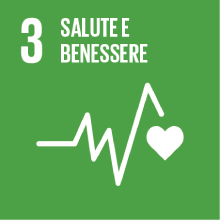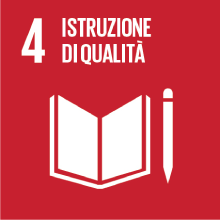POPULATION HISTORY
- Anno accademico
- 2019/2020 Programmi anni precedenti
- Titolo corso in inglese
- POPULATION HISTORY
- Codice insegnamento
- LT9015 (AF:248694 AR:136258)
- Modalità
- In presenza
- Crediti formativi universitari
- 6
- Livello laurea
- Laurea
- Settore scientifico disciplinare
- M-STO/02
- Periodo
- 4° Periodo
- Anno corso
- 3
- Spazio Moodle
- Link allo spazio del corso
Inquadramento dell'insegnamento nel percorso del corso di studio
-Analyze Population History in a multidisciplinary perspective able to encompass political, economic and cultural factors
-Analyze Population History in global perspective, namely considering the networks of cultural, economic and political relations
The above-mentioned three specific objectives aim to give students the instruments necessary to develop a critical view of the topics discussed and to develop an independent and multidisciplinary methodology for the analysis of historical phenomena to better understand the present.
Risultati di apprendimento attesi
- Understand the general framework of the historical analysis of population
- Understand the specificity of the early modern period and its heritage
- Understand the multidisciplinary character of the historical analysis
2. Ability of applying knowledge and understanding
- Understand the general framework of the historical analysis of population > Ability of discussing subjects related to the field (Population History) in a specialized language and according to an historical methodology
- Understand the specificity of the early modern period and its heritage > Ability of pinpointing the characters of the early modern period and confronting them with the following ages
- Understand the multidisciplinary global character of the historical analysis > Ability of applying the historical methodology acquired also to other fields of study (e.g. other courses, final dissertation)
3. Judgement abilities
- Ability of connecting the facts and data learnt during lessons
- Ability of organizing the course materials (lessons and readings) in a coherent interpretation
4. Communicative abilities
- Ability of presenting the issues related to the field of study using specialized language
- Ability of presenting the knowledge acquired from lessons and readings in a coherent discourse
5. Learning abilities
- Ability of taking notes during lessons
- Ability of critically reading the assigned bibliography
- Ability of connected the knowledge acquired to nowadays issues
Prerequisiti
Contenuti
This course will take into account major issues in Population History (i.e. the history how world population evolves and changes under the influences of three main factors: wars, technological development and epidemics) with specific focus on the following aspects:
- an introduction to population history
- population over time (from pre-history to contemporary age)
- the Malthus model
- the Boserup model
- the Demographic Transition
- Luigi Luca Cavalli Sforza: genes, population and languages
- the impact of epidemics over population
- the history of medical, cultural and political measures took to control epidemics (18th -20th centuries)
- the scientific, moral and political debate on epidemics (18th -20th centuries)
- the case of the smallpox: from inoculation to eradication (18th -20th centuries)
Testi di riferimento
One of the following essays (available on moodle)
-J. L. A. Webb, Globalization of disease, 1300 to 1900, in The Cambridge World History. Vol. VI The Construction of a Global World, 1400-1800 CE, Part I: Foundations, ed. By J. H. Bentley, S. Subrahmanyam, M. E. Wiesner-Hanks, Cambridge, Cambridge University Press, 2015, pp. 54-75
-M. Harrison, Disease and world history from 1750, in The Cambridge World History. Vol. VII Production, Destruction and Connection, 1750-Present, Part I: Structures, Spaces and Boundary Making, ed. by J. R. McNeill, K. Pomeranz, Cambridge, Cambridge University Press, 2015, pp. 237-257
-E. Manela, The politics of smallpox eradication, in The Cambridge World History. Vol. VII Production, Destruction and Connection, 1750-Present, Part I: Structures, Spaces and Boundary Making, ed. by J. R. McNeill, K. Pomeranz, Cambridge, Cambridge University Press, 2015, pp. 258-284
For those who will not attend lessons
Jared Diamond, Guns, Germs, and Steel: the Fates of Human Societies, New York, Norton, 1999.
All the following essays:
-James L. A. Webb, Globalization of disease, 1300 to 1900, in The Cambridge World History. Vol. VI The Construction of a Global World, 1400-1800 CE, Part I: Foundations, ed. By J. H. Bentley, S. Subrahmanyam, M. E. Wiesner-Hanks, Cambridge, Cambridge University Press, 2015, pp. 54-75
-R. Marks, Exhausting the Earth, in The Cambridge World History. Vol. VI The Construction of a Global World, 1400-1800 CE, Part I: Foundations, ed. By J. H. Bentley, S. Subrahmanyam, M. E. Wiesner-Hanks, Cambridge, Cambridge University Press, 2015, pp. 29-53
-N. D. Cook, The Columbian Exchange, in The Cambridge World History. Vol. VI The construction of a global world, 1400-1800 CE, Part II: Patterns of change, ed. by J. H. Bentley, S. Subrahmanyam, M. E. Wiesner-Hanks, Cambridge, 2015, pp. 103-132
-M. Harrison, Disease and world history from 1750, in The Cambridge World History. Vol. VII Production, Destruction and Connection, 1750-Present, Part I: Structures, Spaces and Boundary Making, ed. by J. R. McNeill, K. Pomeranz, Cambridge, Cambridge University Press, 2015, pp. 237-257
-E. Manela, The politics of smallpox eradication, in The Cambridge World History. Vol. VII Production, Destruction and Connection, 1750-Present, Part I: Structures, Spaces and Boundary Making, ed. by J. R. McNeill, K. Pomeranz, Cambridge, Cambridge University Press, 2015, pp. 258-284
-M. Livi Bacci, Demography and Population, in The Cambridge World History. Vol. VII Production, Destruction and Connection, 1750-Present, Part I: Structures, Spaces and Boundary Making, ed. by J. R. McNeill, K. Pomeranz, Cambridge, Cambridge University Press, 2015, pp. 187-211
-A. Bashford, Population politics since 1750, in The Cambridge World History. Vol. VII Production, Destruction and Connection, 1750-Present, Part I: Structures, Spaces and Boundary Making, ed. by J. R. McNeill, K. Pomeranz, Cambridge, Cambridge University Press, 2015, pp. 212-236
Modalità di verifica dell'apprendimento
The first question will ask the student to present a chosen subject (taken from lessons or bibliography), so that he/she can show his/her ability of organizing information in a coherent discourse and in a historical perspective (expected learning results 1.Knowledge and understanding and 4. Communicative abilities).
The second question will be on an issue explored during lessons so that the student can show his/her ability of personal re-elaboration (expected learning results 3.Judgement abilities and 5.Learning abilities).
The third question will concern the texts assigned, so that the student can show his/her ability of critical reading and understanding of scholarly literature (expected learning results 2.Ability of applying knowledge and understanding and 5. Learning abilities) .
Modalità di esame
Metodi didattici
Case study analysis
Ppt presentations
Written and figurative sources
Digital Humanities
Lingua di insegnamento
Obiettivi Agenda 2030 per lo sviluppo sostenibile
Questo insegnamento tratta argomenti connessi alla macroarea "Capitale umano, salute, educazione" e concorre alla realizzazione dei relativi obiettivi ONU dell'Agenda 2030 per lo Sviluppo Sostenibile


